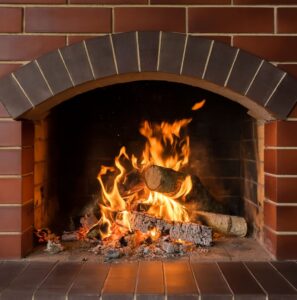How to Block Up a Chimney
 If a fireplace isn’t being used, blocking up a chimney can be a savvy way of preventing draughts in the interior of a building. However, there are different techniques to consider, so be sure to explore all the options to determine which one is right for your property.
If a fireplace isn’t being used, blocking up a chimney can be a savvy way of preventing draughts in the interior of a building. However, there are different techniques to consider, so be sure to explore all the options to determine which one is right for your property.
Temporarily Blocking Up a Chimney
 When you temporarily block off a chimney, you get the benefit of preventing draughts, but you retain the option to return your fireplace to a fully functional state in the future. If you decide that you want to begin using your fireplace once again or if you sell your home, temporary measures to block the chimney can be removed relatively easily.
When you temporarily block off a chimney, you get the benefit of preventing draughts, but you retain the option to return your fireplace to a fully functional state in the future. If you decide that you want to begin using your fireplace once again or if you sell your home, temporary measures to block the chimney can be removed relatively easily.
One of the simplest ways to block up a chimney is simply to add a piece of plywood to the interior of the chimney, just above where the fireplace ends. This can typically be fitted by hand but getting it to stay in place can be tricky. Furthermore, it may not provide as much protection from draughts as you’d like.
With a chimney balloon, however, you can temporarily block up a chimney with ease. As the name suggests, the balloon inflates inside the chimney, using the pressure on each of the four walls to hold itself in place. While the balloon will prevent draughts from entering your home, it also features an air vent. This allows some air to reach the chimney, which helps to reduce the risk of moisture forming inside and causing damp.
Permanently Blocking Up a Chimney
In some instances, homeowners may decide to permanently block off a chimney. If you want to remove the fireplace and plaster over it, for example, permanently blocking up the chimney might seem like a viable option.
If so, the fireplace can usually be closed using bricks, although you’ll want to use at least one air brick to ensure the chimney remains ventilated. In addition to this, extra insulation can be added to the chimney and/or fireplace, prior to blocking it up.
Making the Right Choice
If a fireplace is never used, a permanent solution might seem like the obvious choice. However, this affects the functionality of the property and means you won’t be able to re-establish the fireplace at a later date, without undertaking a significant amount of work. By temporarily blocking up a fireplace, however, you can retain it as a decorative feature, increase the thermal efficiency of your home and begin using your fireplace again in the future, if you want to.
